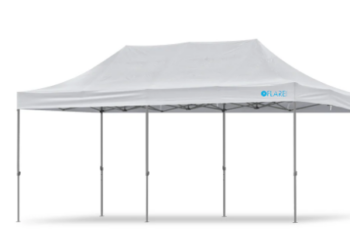Small business owners often face the challenge of obtaining the necessary funding to start or expand their operations. The Small Business Administration offers a range of loan programs that can help small businesses access the capital they need. However, the process of obtaining an SBA loan can be complex and confusing. This guide will provide a comprehensive overview of SBA loans, including the different types of SBA loans available, the application process, and repayment options.
Types of SBA Loans
SBA offers a wide variety of loan programs tailored to meet the specific needs of small businesses. The most popular SBA loan program is the 7a loan program, which can be used for a variety of purposes such as equipment, working capital, and real estate. This program offers loan amounts up to million and has flexible terms and conditions.
The 7a loan program also includes special loan programs for specific industries such as veterans, rural businesses, exports, and community development. SBA 7a loan requirements mandate that the business must have consistent annual revenue, a relatively good credit score (690 or above) and a minimum of two years in business in order to qualify.
Another program offered by SBA is the 504 loan program, which is designed for the purchase of fixed assets such as real estate and business equipment.
This program is targeted towards small businesses that need to acquire long-term assets, such as buildings or heavy machinery. The 504 loan offers up to $5.5 million and provides fixed-rate financing for terms upward of 20 years.
In addition to the 7a and 504 loan programs, SBA also offers the microloan program. This program provides small loans to start-up and existing businesses, with loan amounts up to ,000.
The microloan program is designed to assist small businesses that may not qualify for traditional bank loans, and it provides flexible terms. Microloans are typically used for inventory, working capital, supplies, and equipment.
Application Process
The SBA loan application process can be lengthy and certainly requires a huge amount of documentation. In order to apply for an SBA loan, small business owners will need to provide financial statements, tax returns, and a well-constructed business plan. Additionally, SBA loans may require collateral, such as real estate or heavy equipment, to secure the loan. After gathering the necessary documentation and completing the extensive loan paperwork, applicants will need to submit the application to an SBA-approved lender.
Repayment
SBA loans typically have longer repayment terms than traditional bank loans, with repayment periods of up to 25 years. Interest rates on SBA loans are typically lower than on traditional bank loans. It is important to note, however, that the terms and conditions of the loan will vary depending on the type of loan and the lender.
Pros and Cons
One of the main advantages of SBA loans is that they can provide small business owners with access to capital that they may not be able to obtain through traditional bank loans. The SBA guarantees a portion of the loan, which can make it easier for small business owners to obtain financing. Additionally, SBA loans typically have lower interest rates and longer repayment terms than traditional bank loans.
However, the application process for SBA loans can be time-consuming and complex, and the loan may require collateral. SBA loans also tend to have strict requirements and may not be suitable for all types of businesses. Some businesses that are excluded from SBA loans include religious organizations, multilevel marketing organizations, and businesses that deal in illegal activities such as illicit drug manufacturing or sales.
SBA loans can be a valuable tool for small business owners to access the capital they need to start or expand their operations. By researching and comparing different loan options, understanding the application process, and comprehending the repayment terms and interest rates, business owners can make an informed decision and select the loan that best fits their business needs.







